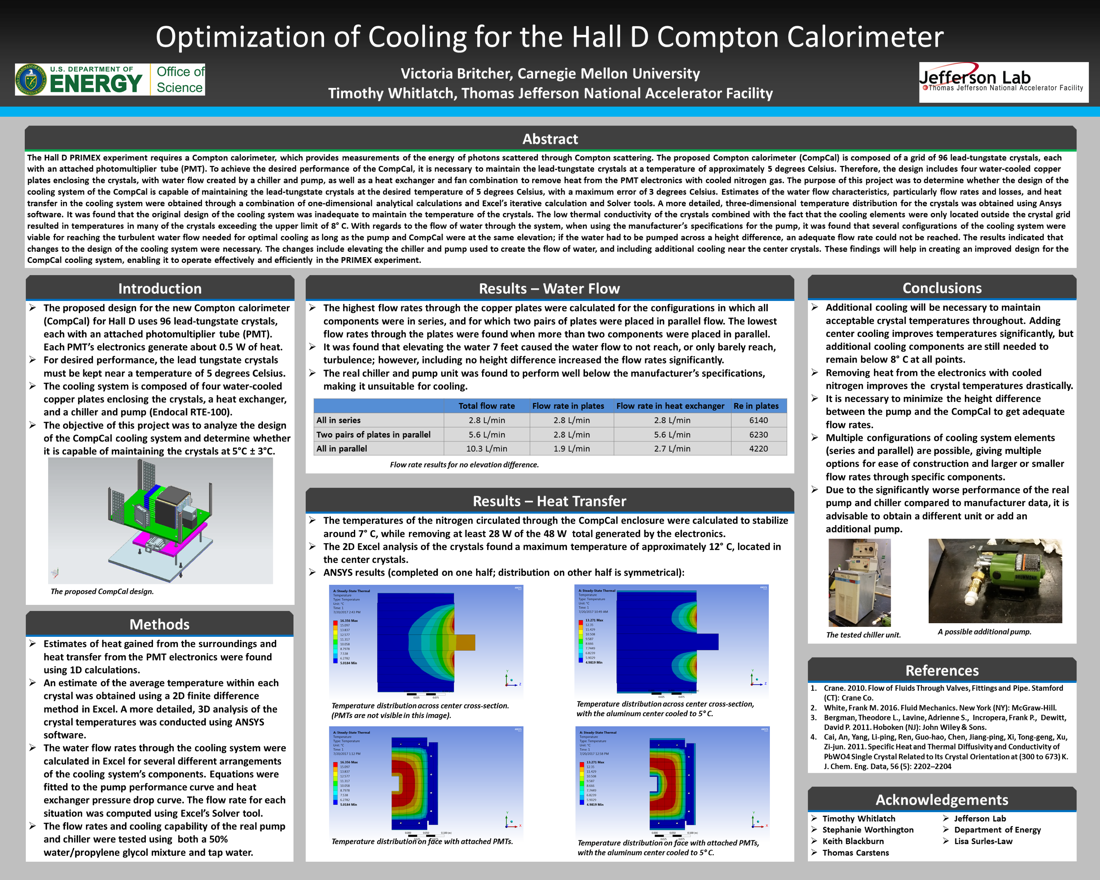Undergraduate Research at Jefferson Lab
Optimization of Cooling for the Hall D Compton Calorimeter
Student: Victoria Britcher
School: Carnegie Mellon University
Mentored By: Timothy Whitlatch
The proposed Compton calorimeter (CompCal) for the Hall D PRIMEX experiment is composed of a grid of 96 lead-tungstate crystals, each with an attached photomultiplier tube (PMT). To achieve the desired performance of the CompCal, it is necessary to maintain the lead-tungstate crystals at a temperature of approximately 5 degrees Celsius. Therefore, the design includes a cooling system composed of four water-cooled copper plates and a heat exchanger. The purpose of this analysis was to determine whether the design of the cooling system of the CompCal is capable of maintaining the lead-tungstate crystals at the desired temperature of 5 degrees Celsius, with a maximum error of 3 degrees Celsius. Estimates of the water flow characteristics and heat transfer in the cooling system were obtained through a combination of one-dimensional analytical calculations and Excel's iterative calculation and Solver tools. A more detailed, three-dimensional temperature distribution for the crystals was obtained using Ansys software. It was found that the original design of the cooling system was inadequate to maintain the temperature of the crystals. The results revealed that temperatures in many of the crystals exceeded the upper limit of 8° C. Regarding the flow of water through the system, it was found that several configurations of the cooling system were viable for cooling as long as the pump and CompCal were at the same elevation; if the water had to be pumped across a height difference, an adequate flow rate could not be reached. The results indicated that changes to the cooling system design were necessary. The changes include elevating the chiller and pump used to create the flow of water, and including additional cooling near the center crystals. These findings will help create an improved design for the CompCal cooling system, enabling it to operate effectively in the PRIMEX experiment.

Citation and linking information
For questions about this page, please contact Education Web Administrator.
